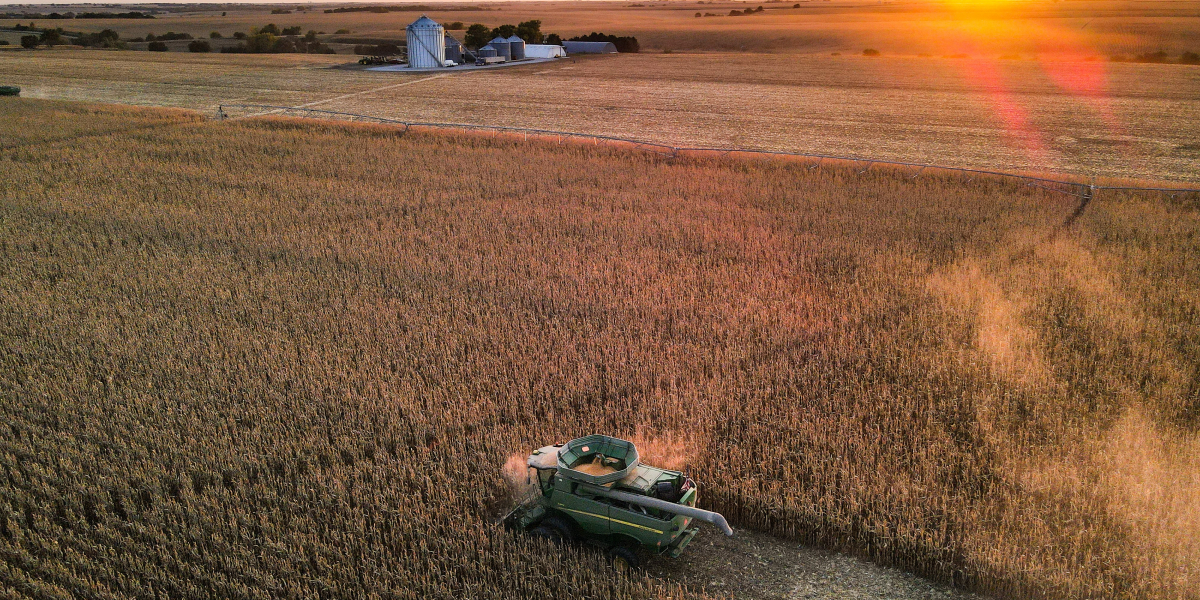
December 7, 2021
The industrial and internationally competitive agriculture & agri-food sector Canada has built over the past century has served us well. Today, Canada is one of the world’s largest producers and exporters of agri-food products, with the sector accounting for one in eight jobs and 7.4% of GDP.[i]
However, the environment in which this sector thrived no longer exists, replaced by a triple planetary emergency — a climate crisis, a biodiversity crisis, and a pollution crisis. The agriculture and agri-food sector has played a significant role in the development of this emergency. Globally, the sector is responsible for one-third of GHG emissions,[ii] one-half of human-induced pressures on biodiversity,[iii] and 1.6 billion tonnes of wasted food[iv].
For Canada to maintain long-term economic, social, and environmental sustainability of its agriculture and agri-food sector, it must turn the tables from contributing to these emergencies to becoming part of the solution.
The circular economy model provides a framework for this. Based on principles of eliminating waste and pollution, circulating materials and products, and regenerating natural systems, it has much to offer to Canada’s agriculture and agri-food economy, while simultaneously helping Canada meet multiple policy goals. These include goals to:
While the framework is straightforward enough, the transition to a circular agriculture and agri-food economy is a multi-dimensional and complex challenge that will require systemic change including innovations in technologies, products, business models, and socio-cultural practices.
SPI’s new report on ‘A Circular Agriculture and Agri-food Economy for Canada’ synthesizes academic and practitioner literature on the subject and presents the landscape of circular practices Canada can introduce or strengthen to build a more resilient and future-proof sector. These are categorized into four objectives and 13 strategic approaches:
What makes these practices so attractive is that often they deliver a very broad value proposition. A great example of this is ReFeed Canada, located in Langley, British Columbia. Established in 2020, ReFeed is working towards revolutionizing the food recovery industry with its Circular Nutrition™ model. Under this model, industrial volumes of unused food are first collected from the food industry. Edible fruits and vegetables are redirected to a food bank or dehydrated into healthy snacks. What cannot be safely consumed is turned into a plant food mix for livestock and supplied to farmers, thereby reducing the amount of field space dedicated to growing livestock feed. ReFeed also runs a commercial scale worm farm where anything left over from human and livestock consumption is turned into an organic, microbially dense worm castings which can be used to naturally fertilize and amend soil. In just over a year of operations, ReFeed has diverted 2.7 million kilograms of food away from compost facilities and landfills towards nutrition for people, livestock, and the soil. In the process it has abated almost 5,500 Mt of CO2e.[v]
Unfortunately, examples like ReFeed are still exceptions rather than the rule in Canada’s largely linear food system. Overcoming the numerous and often mutually reinforcing barriers these practices face will require strong government intervention.
As a first step to inform policy recommendations that can support Canada’s transition to a more circular agriculture and agri-food sector, SPI’s report also outlines a suite of potential policy interventions. This includes the development of new ideas through research, competitions and challenges; financial and technical support for the development, commercialization, and demonstration of specific solutions; stimulating market demand through procurement, pricing, and regulatory tools; and putting in place a supporting ecosystem of partnerships, institutions, workforce development and monitoring and accountability around a shared vision for greater circularity.
With the rest of the world already ramping up action towards circularity, Canada cannot afford to lag behind and risk yielding its position as a global leader in agri-food.
[i] Agriculture and Agri-food Canada (2019). “Ministerial Transition Books - Binder 2 Overview of the department and sector” Government of Canada.
[ii] Ellen MacArthur Foundation (2021). The big food redesign: Regenerating nature with the circular economy.
[iii] Ibid
[iv] Food and Agriculture Organization of the United Nations (2013). Food wastage footprint: Impacts on natural resources.
[v] ReFeed (n.d). ReFeed Canada’s Impact, by The Numbers.